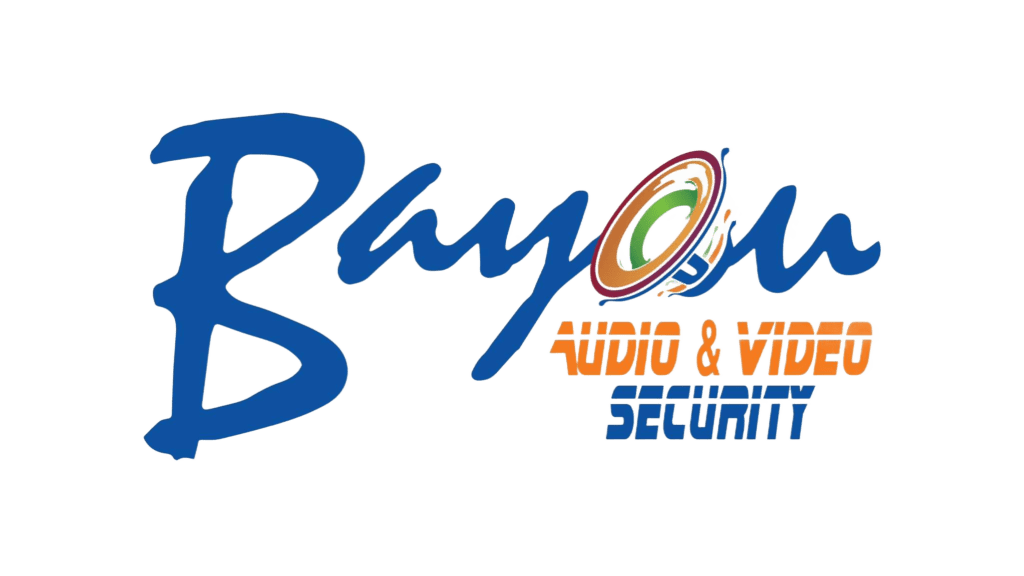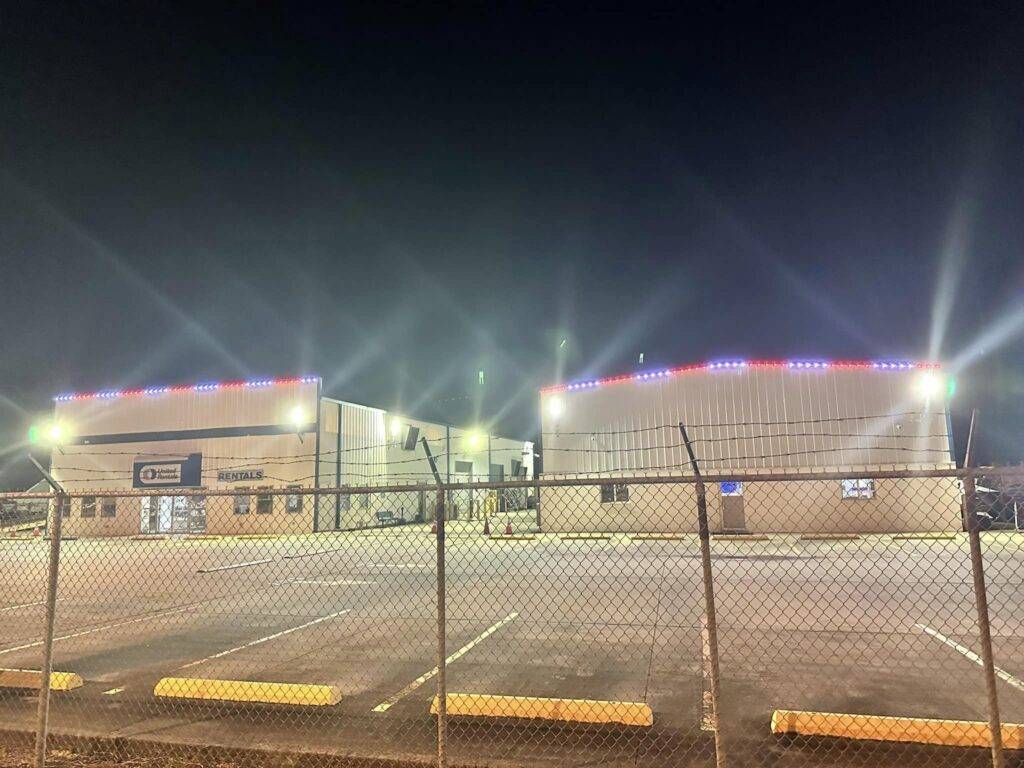Why Your Small Business Needs Video Surveillance in 2025
Recent FBI data shows that businesses without security cameras are 4.5 times more likely to experience theft or vandalism compared to those with business video surveillance systems. Small business owners lost an average of $9,000 per security incident in 2023 alone – losses that could have been prevented with proper security measures.
However, modern surveillance systems offer more than just security. According to recent case studies from the Greater New Orleans area, businesses using advanced video security systems reported 30% fewer workplace incidents and a 25% increase in operational efficiency. With features like real-time monitoring, AI-powered analytics, and cloud storage becoming increasingly affordable, small businesses can now access enterprise-level security solutions without breaking the bank.
This comprehensive guide explores everything you need to know about implementing and maximizing video surveillance for your small business in 2025, from initial setup to long-term benefits.
Understanding Modern Video Surveillance Technology
The landscape of business video surveillance has evolved significantly, moving beyond basic security cameras to sophisticated systems powered by artificial intelligence and cloud technology. In 2025, these systems combine high-definition cameras, advanced recording equipment, and cloud-based software to provide comprehensive protection against security threats.
Latest innovations in 2024
Modern surveillance technology now incorporates AI-powered analytics that can distinguish between everyday activities and potential threats. Specifically, the latest systems feature facial recognition capabilities that can identify individuals based on their facial features, while License Plate Readers (LPR) utilize advanced imaging technology to capture and decode vehicle numbers.
Key features for small businesses
Today’s video surveillance systems offer several essential features that make them particularly valuable for small businesses:
- 4K Ultra HD Resolution: Crystal-clear footage that provides unmistakable identification of people and events
- Remote Monitoring: Real-time access to surveillance feeds from anywhere using smartphones or computers
- AI-Powered Analytics: Smart detection systems that can differentiate between humans, animals, and objects, significantly reducing false alarms
- Night Vision Capabilities: Advanced infrared technology with color night vision for clear footage in low-light conditions
Cloud vs. traditional systems
Furthermore, businesses must choose between cloud-based and traditional on-premise systems. Cloud solutions eliminate the need for physical hardware on-site, while traditional systems store data locally within the business premises.
Cloud-based systems offer significant advantages, particularly for small businesses. These include lower upfront costs, flexible storage scaling, and remote access capabilities. Additionally, cloud solutions typically require minimal maintenance since service providers handle server upkeep.
On the other hand, traditional on-premise systems provide complete control over security and data privacy. These systems are particularly beneficial for businesses with high-security requirements or those operating in areas with unreliable internet connectivity. Nevertheless, they often require substantial initial investment and ongoing maintenance.
The choice between cloud and traditional systems often depends on specific business needs, budget constraints, and security requirements. Presently, many organizations are opting for hybrid solutions that combine the benefits of both approaches, allowing for local storage while maintaining cloud backup capabilities.
Calculating the Real ROI of Video Surveillance
Making smart financial decisions for your small business requires understanding the true cost and return of security investments. Indeed, a detailed analysis of video surveillance systems reveals both immediate expenses and long-term gains that affect your bottom line.
Initial investment breakdown
The upfront cost for a standard commercial video surveillance setup typically ranges between $1,000 to $5,000 for small businesses. Here’s a breakdown of initial expenses:
Cost Component | Typical Range |
Hardware (cameras, storage) | $500 – $3,000 |
Installation | $300 – $1,500 |
Maintenance and Support (annual) | $200 – $500 |
Training | $50 – $300 |
Monthly operating costs
During ongoing operations, businesses can expect to pay between $40 to $120 monthly for professional monitoring services. Cloud storage fees generally range from $120 to $300 annually, depending on the number of cameras and storage duration.
Consequently, maintenance costs remain relatively minimal compared to the initial investment, primarily involving:
- Software updates and upgrades
- Regular camera cleaning
- Hardware replacement due to normal wear
- Network bandwidth expenses
Long-term financial benefits
The economic advantages of business video surveillance become evident over time. Studies show that implementing these systems can reduce shoplifting and inventory shrinkage by up to 30%. Altogether, businesses typically save between $1,000 to $10,000 annually through loss prevention alone.
Moreover, employee productivity increases by approximately 15% with effective video surveillance implementation. Insurance providers often offer reduced premiums for businesses with comprehensive security systems, contributing to additional cost savings.
When analyzing total returns, consider these quantifiable benefits:
- Reduction in theft and vandalism: $5,000 – $10,000 annually
- Increased employee productivity value: $3,000 – $7,000 annually
- Improved customer retention impact: $2,000 – $4,000 annually
Most businesses achieve their break-even point within the first year of implementation. Subsequently, the system continues generating positive returns through enhanced security and operational efficiency.
Step-by-Step Implementation Guide
Initially, implementing a business video surveillance system requires careful planning and professional expertise. A qualified security technician should perform a comprehensive site evaluation to ensure optimal system design.
Security assessment process
First thing to remember, begin with a thorough walk-through of your facility to evaluate potential security threats and vulnerable areas. Under these circumstances, create a detailed assessment that includes:
- Entry/exit points monitoring requirements
- Storage area security needs
- Points of monetary transactions
- Work areas and loading docks
- Break room surveillance considerations
Camera placement strategy
Important to realize, strategic camera placement is crucial for eliminating blind spots while maintaining privacy. Here’s a structured approach for optimal coverage:
Integration
Type | Business
Benefits |
Access
Control | Real-time
monitoring of entry/exit points |
Environmental
Controls | Automated
temperature and lighting management |
Point-of-Sale
Systems | Transaction
verification and fraud prevention |
Business
Intelligence | Centralized
data analysis and reporting |
Certainly, these integrations create a more robust security infrastructure while providing valuable business insights. For instance, businesses can automatically identify tailgating hotspots and measure foot traffic patterns to optimize store layouts.
The system can likewise monitor various operational aspects, such as equipment status and environmental conditions. When integrated with heating and air conditioning systems, the surveillance setup can send notifications if someone forgets to adjust the thermostat or turn off equipment, contributing to energy savings and operational efficiency.
Avoiding Common Implementation Mistakes
Successful implementation of business video surveillance systems requires careful attention to technical details. Straightaway, let’s examine the most critical aspects that often lead to implementation failures when overlooked.
Storage capacity planning
Notably, video storage requirements can quickly exceed initial estimates. A single 1080p camera recording at 30 frames per second typically consumes 2-4 Mbps of data. Under these circumstances, businesses must calculate storage needs based on:
Integration
Type | Business
Benefits |
Access
Control | Real-time
monitoring of entry/exit points |
Environmental
Controls | Automated
temperature and lighting management |
Point-of-Sale
Systems | Transaction
verification and fraud prevention |
Business
Intelligence | Centralized
data analysis and reporting |
Certainly, these integrations create a more robust security infrastructure while providing valuable business insights. For instance, businesses can automatically identify tailgating hotspots and measure foot traffic patterns to optimize store layouts.
The system can likewise monitor various operational aspects, such as equipment status and environmental conditions. When integrated with heating and air conditioning systems, the surveillance setup can send notifications if someone forgets to adjust the thermostat or turn off equipment, contributing to energy savings and operational efficiency.
Avoiding Common Implementation Mistakes
Successful implementation of business video surveillance systems requires careful attention to technical details. Straightaway, let’s examine the most critical aspects that often lead to implementation failures when overlooked.
Storage capacity planning
Notably, video storage requirements can quickly exceed initial estimates. A single 1080p camera recording at 30 frames per second typically consumes 2-4 Mbps of data. Under these circumstances, businesses must calculate storage needs based on:
Recording
Duration | Storage
Required (Per Camera) |
Daily
(24/7) | 60-100
GB/month |
Motion-Only | 30-50
GB/month |
4K
Resolution | 300-500
GB/month |
Rather than risking insufficient storage, implement a backup strategy following the 3-2-1 rule: maintain three copies of data on two different media types with one copy stored off-site.
Network bandwidth considerations
In this situation, network capacity plays a crucial role in system performance. The following factors affect bandwidth consumption:
- Scene complexity and lighting conditions require significantly more bandwidth than static, well-lit areas
- Camera placement relative to recording devices impacts overall network load
- Smart codecs can reduce bandwidth usage while maintaining video quality
Before implementing your system, ensure your network can handle the required upload speed of 2 Mbps for each 1080P camera at 30 FPS. After all, inadequate bandwidth leads to severe issues including stream delays, video packet loss, and footage corruption.
Maintenance requirements
A well-maintained surveillance system demands regular attention to prevent failures. Security patches and firmware updates occur frequently to protect against newly discovered vulnerabilities. Consider these essential maintenance tasks:
Regular System Checks:
- Security patches installation
- Firmware updates
- Tamper detection verification
- Camera downtime alerts monitoring
Physical Maintenance:
- Camera housing inspection after significant weather events
- Power supply and connection verification
- Lens cleaning for optimal video quality
- Storage capacity monitoring
Older systems require maintenance checks every three months at minimum. The frequency of maintenance varies based on:
- Manufacturer specifications
- Environmental conditions
- System configuration
- Age of equipment
Most modern systems should function properly without constant attention, although some security patches and hardware issues will naturally arise. Automated tamper detection and instant offline notifications help streamline the maintenance process by alerting users to potential issues immediately.
The expense of preventative maintenance remains considerably lower than the costs associated with unexpected equipment failure. Professional maintenance services can identify and resolve potential problems before they escalate into significant issues affecting your surveillance capabilities.
Conclusion
Business video surveillance has evolved significantly beyond basic security cameras. Through proper implementation, these systems now serve as powerful tools for loss prevention, operational efficiency, and business intelligence.
Small businesses investing in modern surveillance systems typically recover their initial costs within the first year. The combination of reduced theft, increased productivity, and lower insurance premiums creates substantial long-term value. Additionally, advanced features like AI-powered analytics and remote monitoring capabilities help business owners make data-driven decisions while maintaining oversight from anywhere.
Success with video surveillance depends largely on careful planning and proper maintenance. Strategic camera placement, adequate storage capacity, and regular system updates ensure optimal performance and reliable security coverage. Though implementation challenges exist, most issues can be avoided through thorough preparation and professional guidance.
Small business owners should consider video surveillance an essential investment for 2025 and beyond. The technology continues to become more affordable and capable, offering enterprise-level security features at small business prices. Those who implement these systems position themselves to better protect their assets, optimize operations, and maintain a competitive edge in today’s business environment.


